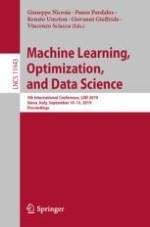2019 | OriginalPaper | Buchkapitel
Using Clustering for Supervised Feature Selection to Detect Relevant Features
verfasst von : Christoph Lohrmann, Pasi Luukka
Erschienen in: Machine Learning, Optimization, and Data Science
Aktivieren Sie unsere intelligente Suche, um passende Fachinhalte oder Patente zu finden.
Wählen Sie Textabschnitte aus um mit Künstlicher Intelligenz passenden Patente zu finden. powered by
Markieren Sie Textabschnitte, um KI-gestützt weitere passende Inhalte zu finden. powered by
